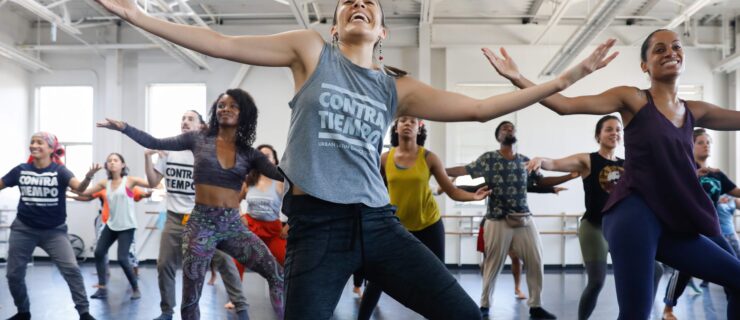What it Takes to be an On-Air Commentator for a Dance TV Show
The Premise
While you’ve been watching Kelly, Ruben and Fantasia battle it out on “American Idol,” Australians have had their TVs set to “Strictly Dancing,” a contest between dancing couples instead of singers—but with a catch. Three weeks before the competition, the couples are told which six styles of dance they will perform. In addition to forms such as lambada, salsa, paso doble, tango, jazz, funk, hip hop, samba and rumba, international ballroom coaches and judges have created hybrids such as cocktail samba (a combination of street Latin styles and ballroom) devised to even out the playing field when ballroom couples are paired against street-Latin specialists.
On The Job
Being an on-air commentator can be fast-paced and exciting. “Each show has six rounds featuring six different dance styles,” Angela Gilltrap explains. “Each round consists of four competing couples, a commentary team that explains the action and a host who keeps everything flowing.”
As a singer, dancer, actor and musician who hit the professional scene at 16, Gilltrap knows all about the business, which makes for credible commentary, although she misses the interaction with the audience that only performing can provide. “When I’m working in television, holed up in a little studio, I rarely get to judge the audience’s reaction,” she admits.
In Her Free Time
At just 25, Angela hasn’t entirely given up center stage yet, though she admits that her gig as a commentator keeps her pretty busy. When she can, Gilltrap finds the time to perform and choreograph; to teach jazz, musical theater, tap and funk; to work as a photographer and to write for magazines. She also recently finished a behind-the-scenes book about “Strictly Dancing.”
Getting The Gig
The company producing “Strictly Dancing” initially approached Gilltrap’s agent about finding someone for the job, but she still had to go through an interview process and do a number of screen tests before landing the job. Afterwards, “I did a lot of on-the-job training in terms of voice-over technique and tone, plus I had to read up on the dance styles I wasn’t familiar with,” Gilltrap explains. “You need to be on the ball all the time, remembering that two million people are listening to what you are saying, so it’s important to think before you speak.”



